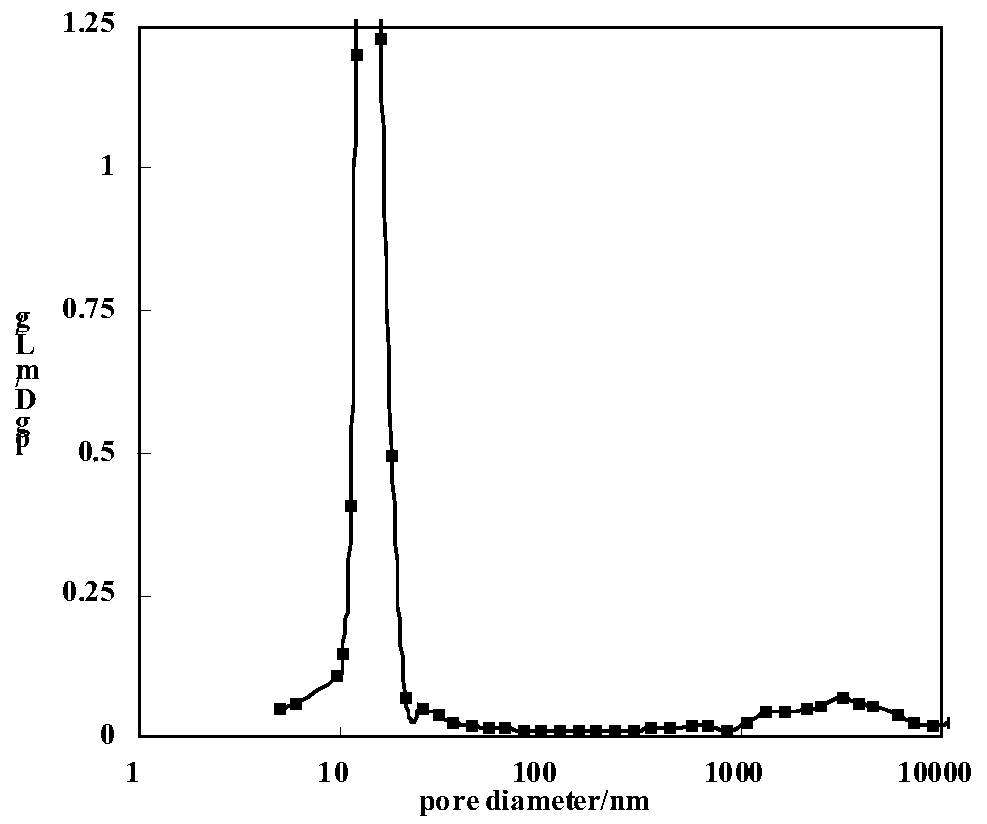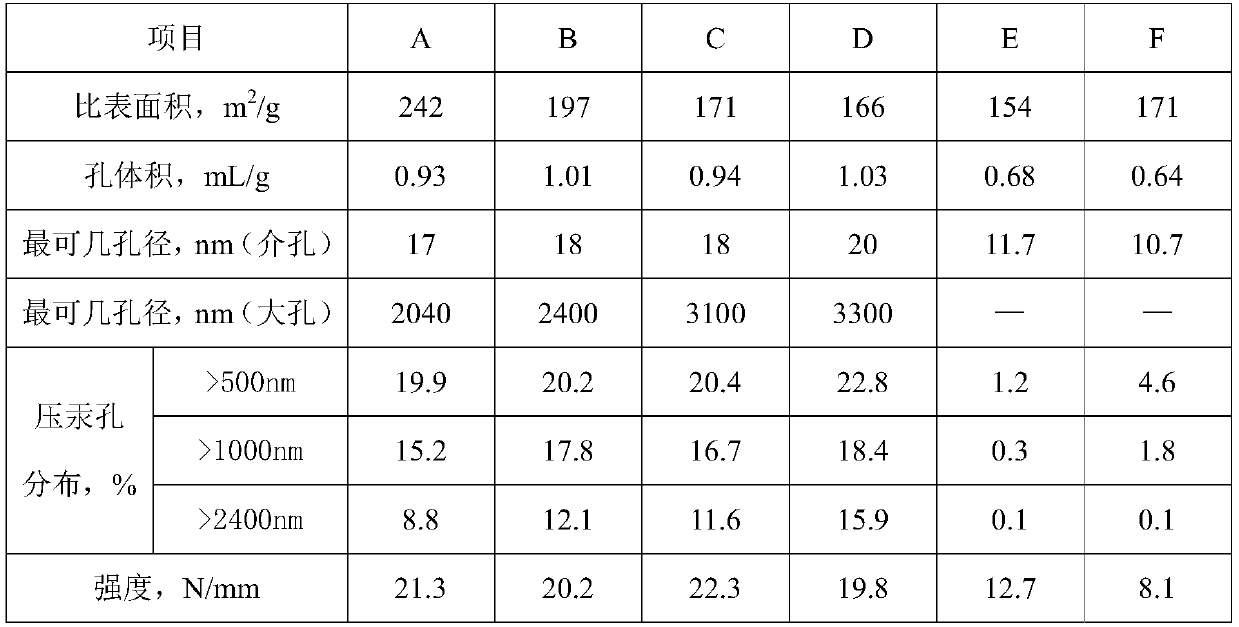Alumina carrier with bimodal pore structure and preparation method thereof
A technology of alumina carrier and bimodal pores, which is applied in the field of alumina carrier with bimodal pore structure and its preparation, can solve the problems of inability to improve catalyst diffusion performance to the greatest extent, unavoidable pore blockage, reduction of carrier strength, and the like, Achieve the effect of reducing roasting energy consumption, reducing damage and improving product strength
- Summary
- Abstract
- Description
- Claims
- Application Information
AI Technical Summary
Problems solved by technology
Method used
Image
Examples
Embodiment 1
[0048] Preparation of pseudoboehmite M 1 and M 2 . Determination of specific surface area and pore volume of pseudoboehmite by nitrogen adsorption method, M 1 The specific surface area is 184m 2 / g, the pore volume is 2.1mL / g, and the most probable pore diameter is 40.8nm; M 2 The specific surface area is 420m 2 / g, the pore volume is 1.3mL / g, and the most probable pore diameter is 18.6nm.
[0049] Weigh the above-mentioned pseudo-boehmite M 1 50g (dry basis), pseudo-boehmite M 2 50g (dry basis), add 3g of asparagus powder, dissolve 1.8g of boric acid and 0.8g of polyoxyethylene ether in 110g of deionized water, add to the aforementioned materials, knead and extrude into a cylinder with a diameter of 2.5mm on a single-screw extruder shape, dried at 105°C for 4 hours, and then calcined at 800°C for 4 hours to obtain alumina carrier A, whose properties are shown in Table 1.
Embodiment 2
[0051] Preparation of pseudoboehmite M 1 and M 2 . Determination of specific surface area and pore volume of pseudoboehmite by nitrogen adsorption method, M 1 The specific surface area is 178m 2 / g, the pore volume is 2.2mL / g, and the most probable pore diameter is 34.6nm; M 2 The specific surface area is 400m 2 / g, the pore volume is 1.3mL / g, and the most probable pore diameter is 17.0nm.
[0052] Weigh the above-mentioned pseudo-boehmite M 1 60g (dry basis), pseudo-boehmite M 2 40g (dry basis), add 2.0g of asparagus powder and 1.0g of boron oxide, dissolve 1g of polyoxyethylene ether in 107g of deionized water, add to the aforementioned materials, knead and extrude on a single-screw extruder into diameter 3.0mm Four-leaf clover shape, dried at 120°C for 3 hours, and then calcined at 600°C for 5 hours to obtain alumina carrier B, whose properties are shown in Table 1.
Embodiment 3
[0054] Preparation of pseudoboehmite M 1 and M 2 . Determination of specific surface area and pore volume of pseudoboehmite by nitrogen adsorption method, M 1 The specific surface area is 230m 2 / g, the pore volume is 3.0mL / g, and the most probable pore diameter is 51.5nm; M 2 The specific surface area is 410m 2 / g, the pore volume is 1.4mL / g, and the most probable pore diameter is 18.0nm.
[0055] Weigh the above-mentioned pseudo-boehmite M 1 70g (dry basis), pseudo-boehmite M 2 30g (dry basis), add 3g of asparagus powder, dissolve 1.6g of boric acid and 1.4g of polyoxyethylene ether in 110g of deionized water, add to the aforementioned materials, knead and extrude into a clover with a diameter of 3.0mm on a single-screw extruder shape, dried at 110°C for 4 hours, and then calcined at 750°C for 4 hours to obtain alumina carrier C, whose properties are shown in Table 1.
PUM
| Property | Measurement | Unit |
|---|---|---|
| Specific surface area | aaaaa | aaaaa |
| Pore volume | aaaaa | aaaaa |
| Most probable aperture | aaaaa | aaaaa |
Abstract
Description
Claims
Application Information
 Login to View More
Login to View More - R&D
- Intellectual Property
- Life Sciences
- Materials
- Tech Scout
- Unparalleled Data Quality
- Higher Quality Content
- 60% Fewer Hallucinations
Browse by: Latest US Patents, China's latest patents, Technical Efficacy Thesaurus, Application Domain, Technology Topic, Popular Technical Reports.
© 2025 PatSnap. All rights reserved.Legal|Privacy policy|Modern Slavery Act Transparency Statement|Sitemap|About US| Contact US: help@patsnap.com


